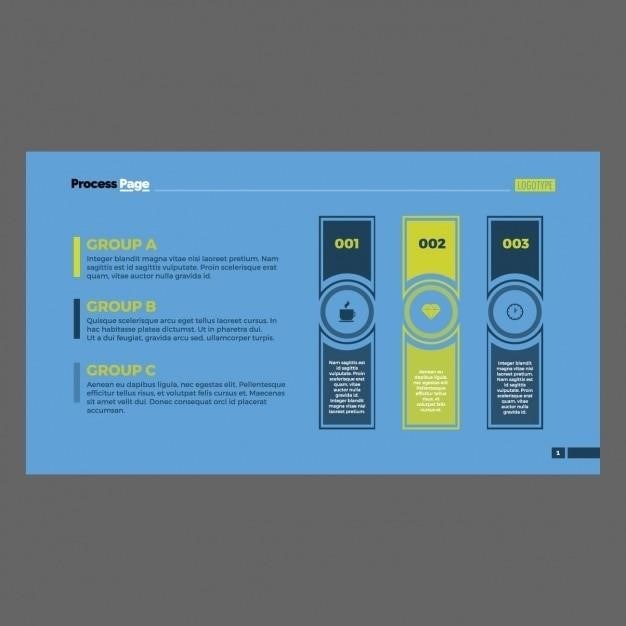It 214 Instructions⁚ A Comprehensive Guide
This comprehensive guide provides detailed information on the IT-214 form, a crucial document for claiming the Real Property Tax Credit in New York State.
Overview
The IT-214 form, officially titled “Claim for Real Property Tax Credit for Homeowners and Renters,” is a vital document for New York State residents seeking tax relief on property taxes. This credit, designed to ease the financial burden of property taxes, is available to both homeowners and renters who meet specific eligibility requirements. The IT-214 form serves as the official application for this credit, allowing individuals to claim a portion of their property tax payments back in the form of a tax credit. Understanding the intricacies of this form and its associated instructions is crucial for maximizing your potential tax savings.

This guide provides a comprehensive overview of the IT-214 form, outlining its purpose, eligibility criteria, calculation methods, filing procedures, deadlines, potential penalties, and other essential information. By carefully reviewing the information presented, you can ensure a smooth and successful filing process, ultimately maximizing your chances of receiving the full amount of credit you are entitled to.

Eligibility Requirements
To qualify for the Real Property Tax Credit in New York State, you must meet specific eligibility requirements outlined on the IT-214 form. These requirements are designed to ensure that the credit benefits those who need it most, particularly low-to-moderate income individuals and families. The primary eligibility criteria include⁚
- Residency⁚ You must be a New York State resident, meaning you live in the state and pay taxes there.
- Income⁚ Your household gross income must be at or below a certain threshold, which varies depending on your filing status and the number of dependents you claim.
- Property Ownership or Rental⁚ You must either own your home in New York State or be a renter who pays real property taxes as part of their rent.
It is essential to verify your eligibility before filing the IT-214 form. The New York State Department of Taxation and Finance provides resources and tools to help determine your eligibility, including online calculators and detailed information on their website. If you are unsure about your eligibility, it is always advisable to contact the department directly for assistance.
Calculation of the Credit
The amount of the Real Property Tax Credit you are eligible for is calculated based on your household income and the amount of real property taxes you pay. The calculation process is outlined in the instructions for Form IT-214, and it is crucial to understand this process to ensure you claim the correct amount of credit.
Here are the key factors involved in calculating the credit⁚
- Household Income⁚ Your total household income for the tax year is used to determine the credit amount. This includes income from all sources, such as wages, salaries, pensions, and investments.
- Real Property Taxes Paid⁚ If you own your home, you will use the amount of real property taxes you paid during the tax year. If you are a renter, only a portion of your rent is considered real property taxes for the purpose of the credit (usually 25%).
- Credit Percentage⁚ The percentage of the real property taxes you can claim as a credit is determined by your household income. The lower your income, the higher the percentage of the credit you will receive.
The IT-214 instructions provide specific tables and formulas to guide you through the calculation process. It is essential to carefully review these instructions and use the correct information to ensure you claim the maximum credit you are entitled to.
How to File Form IT-214
Filing Form IT-214 is a straightforward process, but it’s essential to ensure you complete it accurately and submit it by the deadline. The instructions for the form provide a step-by-step guide, and you can also find helpful resources online to assist you.
Here is a general overview of the filing process⁚
- Obtain Form IT-214⁚ You can download Form IT-214 and the instructions from the New York State Department of Taxation and Finance website. Alternatively, you can request a copy of the form by mail or phone.
- Gather Necessary Information⁚ Before filling out the form, gather all the required information, such as your Social Security number, household income, and the amount of real property taxes paid. If you are a renter, you will need to determine the portion of your rent that is considered real property taxes.
- Complete Form IT-214⁚ Carefully fill out the form, ensuring that all information is accurate and legible. Use black ink and avoid using white-out.
- Review and Sign⁚ Review the completed form to ensure accuracy before signing and dating it. It is important to keep a copy of the completed form for your records.
- Submit Form IT-214⁚ Mail the completed form to the address provided in the instructions. Alternatively, you may be able to file electronically through the New York State Department of Taxation and Finance website, depending on your specific circumstances.
If you have any questions or need assistance, you can contact the New York State Department of Taxation and Finance for guidance.
Deadline for Filing
The deadline for filing Form IT-214, Claim for Real Property Tax Credit for Homeowners and Renters, coincides with the general income tax filing deadline for New York State residents. This deadline typically falls on April 15th of each year, but it can be adjusted based on specific circumstances.
It is crucial to remember that late filing can result in penalties, so it’s essential to submit your form on time. The New York State Department of Taxation and Finance provides detailed information regarding the specific deadline for each tax year on their website and in the instructions for Form IT-214.
If you are unable to file by the deadline due to extenuating circumstances, you may be able to request an extension. However, it’s important to note that an extension allows you more time to file your return, but it does not extend the time to pay your taxes. You should contact the New York State Department of Taxation and Finance for guidance on requesting an extension.
Staying informed about the filing deadline and adhering to it is crucial to avoid penalties and ensure you receive your rightful tax credit.
Penalties for Late Filing
Filing Form IT-214 after the designated deadline can result in penalties. The New York State Department of Taxation and Finance imposes penalties for late filing, which are calculated based on the amount of unpaid taxes and the duration of the delay.
The penalty for late filing is typically a percentage of the unpaid tax liability, calculated per month or part of a month that the return is late. The penalty can be substantial, especially if the unpaid tax amount is significant. It’s important to note that there may be exceptions to these penalties, such as situations where there are extenuating circumstances or if you are due a refund.
To avoid penalties, it’s essential to file your Form IT-214 on time or to seek an extension if necessary. Carefully review the instructions for Form IT-214 and contact the New York State Department of Taxation and Finance if you have any questions about the filing deadline or potential penalties. Understanding the penalties associated with late filing can help you avoid them and ensure you receive your tax credit without incurring additional costs.
Supporting Documentation
When filing Form IT-214, it is crucial to provide supporting documentation to substantiate your claim for the Real Property Tax Credit. The required documents vary depending on your individual circumstances, but generally include proof of residency, income, and real property taxes paid.
For homeowners, this documentation typically includes a copy of your property tax bill or statement, along with proof of ownership, such as a deed or mortgage statement. Renters, on the other hand, need to provide a copy of their lease agreement and a statement from their landlord confirming the amount of real property taxes paid; In addition to these documents, you may be required to provide documentation verifying your income, such as a W-2 form or a tax return.
It is essential to ensure that all supporting documentation is accurate and complete. Missing or incomplete documentation can delay the processing of your claim and potentially result in a denial of your tax credit. Organize your documents meticulously and retain copies for your records. By providing the necessary supporting documentation, you can increase the likelihood of a smooth and successful claim for the Real Property Tax Credit.
Contact Information
If you have any questions or need assistance with Form IT-214, you can reach out to the New York State Department of Taxation and Finance for guidance. Their website, www.tax.ny.gov, offers a wealth of information on various tax topics, including the Real Property Tax Credit. You can find contact information for the department, including phone numbers, email addresses, and mailing addresses, on their website.
Alternatively, you can contact the New York State Assembly, which provides information and resources on tax-related matters. Their website, www.assembly.state.ny.us, offers a comprehensive overview of state laws and regulations, including those pertaining to tax credits. You can find contact information for the Assembly, including phone numbers, email addresses, and mailing addresses, on their website.
If you prefer to speak with a tax professional, you can consult with a certified public accountant (CPA) or a tax attorney. These professionals can provide personalized advice and assistance with your tax filings, including Form IT-214. Remember to choose a qualified tax professional who specializes in New York State taxes to ensure you receive accurate and relevant guidance.
Resources
For comprehensive information and guidance on Form IT-214, several valuable resources are readily available. The New York State Department of Taxation and Finance offers a dedicated webpage for the Real Property Tax Credit, which includes downloadable forms, instructions, and frequently asked questions. You can access this page directly through the department’s website, www.tax.ny.gov, or by searching for “Real Property Tax Credit” on their website.
Furthermore, the New York State Assembly provides a wealth of resources on tax-related matters, including the Real Property Tax Credit. Their website, www.assembly.state.ny.us, offers detailed information on state laws and regulations pertaining to tax credits, including Form IT-214. You can access this information through the Assembly’s website, or by contacting their office directly for further assistance.
Additionally, various online platforms offer resources and guidance on Form IT-214. Websites like DocHub provide downloadable templates and online tools for completing and signing the form electronically. These platforms can simplify the process of filling out the form and ensure accuracy in your filings. Remember to choose reputable platforms with secure online services to safeguard your personal and financial information.
Frequently Asked Questions
Understanding the nuances of Form IT-214 can lead to common questions. Here are some frequently asked questions and their answers to help you navigate the process⁚
- What amount of my rent is considered real property taxes for purposes of the real property tax credit? Only 25% of your adjusted rent is considered real property taxes paid. Refer to Form IT-214 and its instructions for detailed information.
- How much is the credit? The amount of the credit is based on your household income and the amount of real property taxes paid. Consult Form IT-214 and its instructions for specific calculations.
- What if I fail to file my taxes on time? Filing late can result in penalties. The penalty for failing to file represents 5% of your unpaid tax liability for each month your return is late, up to 25% of your total unpaid taxes. However, if you are due a refund, there is no penalty for failure to file.
If you have further questions or require clarification on any aspect of Form IT-214, it is highly recommended to consult the official resources mentioned earlier or contact the New York State Department of Taxation and Finance directly. Their dedicated staff can provide personalized assistance and ensure you receive the correct guidance for your specific situation.
Example Scenarios
To better understand the application of Form IT-214, let’s consider a few practical scenarios⁚
- Scenario 1⁚ Homeowner with moderate income
A homeowner with a household gross income of $15,000 pays $2,000 in real property taxes. They are eligible for the credit and may receive a significant portion of their taxes back, depending on the credit calculation. - Scenario 2⁚ Renter with low income
A renter with a household gross income of $10,000 pays $1,500 in rent, where 25% is allocated towards real property taxes. They would qualify for the credit based on their income and could potentially receive a portion of the allocated real property taxes back. - Scenario 3⁚ Homeowner exceeding the income limit
A homeowner with a household gross income of $20,000 pays $2,500 in real property taxes. They would not be eligible for the credit because their income exceeds the specified limit.
These scenarios highlight the importance of carefully evaluating your individual circumstances to determine your eligibility for the Real Property Tax Credit. By understanding the specific requirements and calculations outlined in Form IT-214 and its instructions, you can accurately assess your potential benefits and maximize your chances of receiving this valuable tax credit.
Additional Information
Beyond the core instructions, there are several supplementary points to consider when navigating Form IT-214⁚
- Changes to the Credit⁚ The New York State Department of Taxation and Finance may periodically update the eligibility requirements, calculation methods, or other aspects of the Real Property Tax Credit. It is crucial to consult the most recent version of Form IT-214 and its accompanying instructions for the most accurate and up-to-date information.
- Taxpayer Assistance⁚ If you have questions or require assistance in completing Form IT-214, the New York State Department of Taxation and Finance offers various resources. You can contact their customer service hotline, visit their website, or seek guidance from a qualified tax professional.
- Record Keeping⁚ Maintaining thorough records of your income, rent payments, and real property tax payments is essential for accurately completing Form IT-214 and supporting your claim for the Real Property Tax Credit. Keep all relevant documentation readily accessible for future reference.
By staying informed, seeking assistance when needed, and maintaining comprehensive records, you can confidently navigate the process of claiming the Real Property Tax Credit using Form IT-214 and its instructions.












